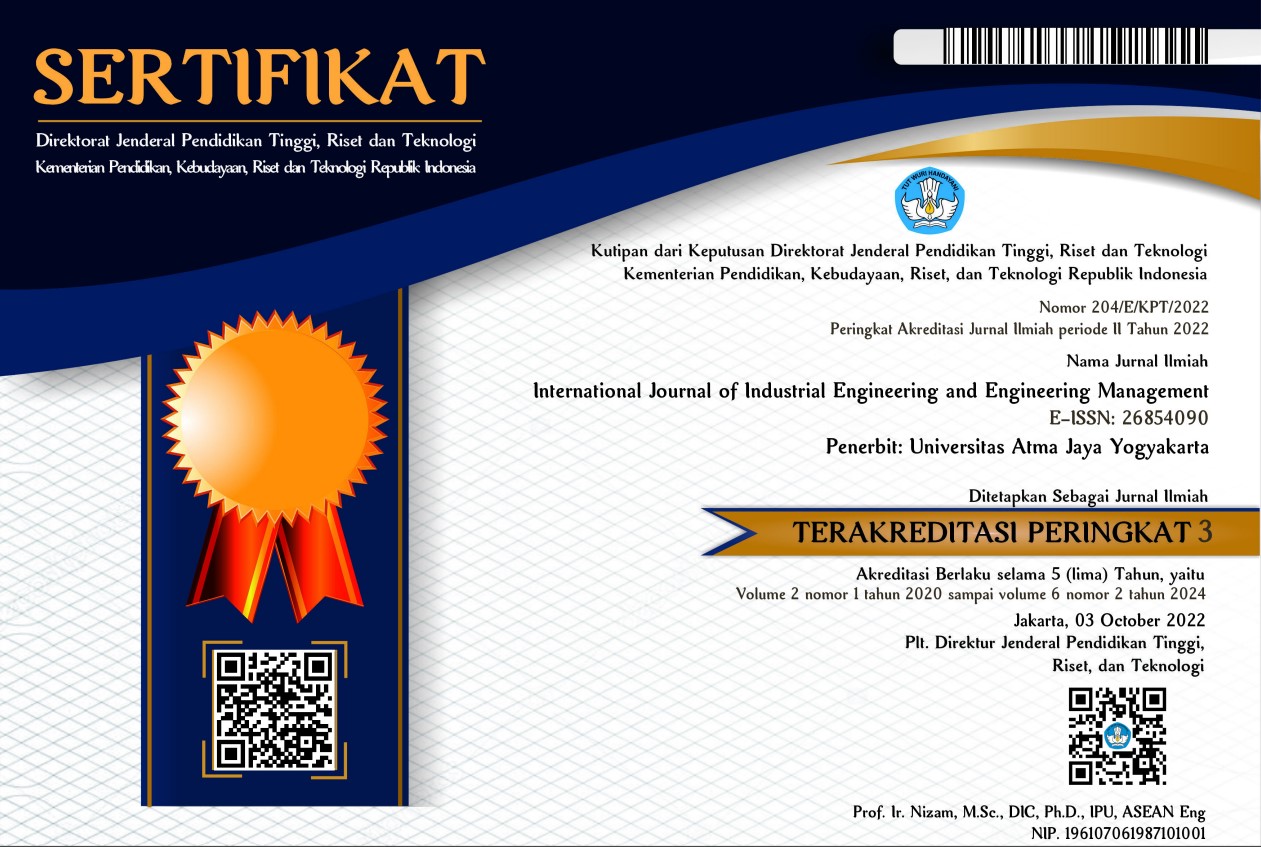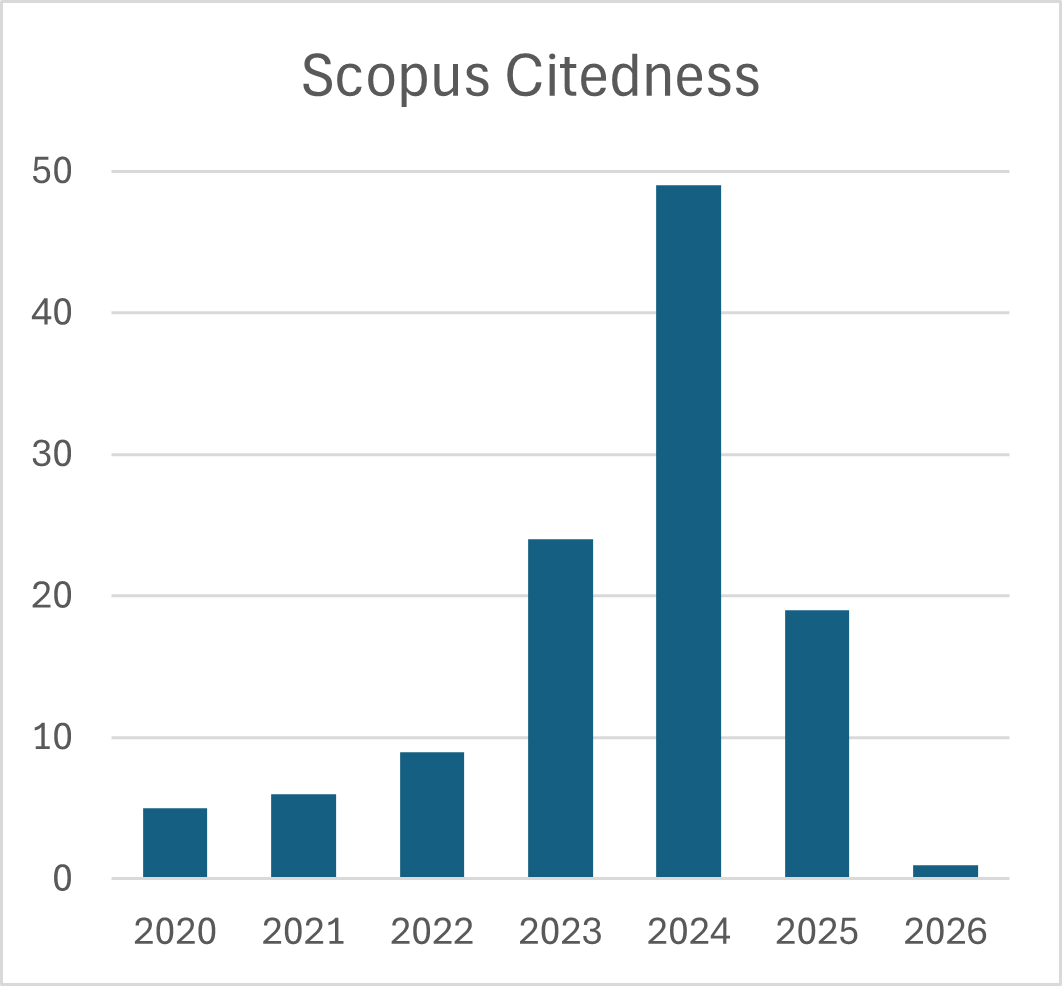Application of Fuzzy Analytic Hierarchy Process (FAHP) to Improve Precision and Certainty on Safety Conformity Evaluation in a Bottling Plant
DOI:
https://doi.org/10.24002/ijieem.v5i1.6498Keywords:
fuzzy AHP, bottling plant, safety, multicriteria, uncertainty, imprecisionAbstract
With the bottling plant facing safety impacts, the commitment toward zero levels of accidents needs to be evaluated. However, the perception and measurement of safety conformity by the safety manager that is subjected to imprecision and uncertainty are hardly evaluated correctly with the present dominant approach of using crisp numeric values. This article presents a fuzzy analytic hierarchy process (FAHP) approach to reduce the imprecision and uncertainty in the safety conformity multicriteria decision-making results. The method establishes and selects the best safety conformity factors in alignment with different criteria within the segments of a Nigerian bottling plant. The fuzzy synthetic extent concerning each alternative, the degree of possibility, prioritizing weights, and the choice of the best criterion were judged based on the maximum weight in the FAHP evaluation process. The average weight criterion was used to distinguish the best from the worst units within each segment. The results reveal the criteria weights as 0.4937 for haulage drillers (warehouse), 0.3038 for palletizers (manufacturing corridor), 0.3333 for syrup mixers/lab technicians for quality assurance, and no choice of the best parameter for the fleet workshop. However, the highest weight for the contractors is 0.3201, which is for contractor 1. To compare the best and worst criteria in the present study and a literature source, the optimal criteria choices of safety conformity conflicted in all the segments. The principal difference between the present method and the analytic hierarchy process approach is integrating fuzzy application to the analytical hierarchy process to provide a more accurate safety conformity assessment, yielding reliable and informative results representing the vagueness of the bottling process decision-making process. This unique approach provides an opportunity for the production workers to work more collaboratively towards attaining new solutions to the uncertainty and imprecision problem in safety conformity for the bottling plant.
References
Al-Ani, Z., Thafseer, M., Gujaruthi, A.M., & Vkili-Nezhaad, G.R. (2020). Towards process, energy and safety based criteria for multi-objective optimization of industrial acid gas removal process. Process, Safety, and Environmental Protection, 140, 86-99.
Cheraghi, M., Baladeh, A.E., & Khazad, N. (2022). Optimal selection of safety recommendation, a hybrid fuzzy multicriteria decision-making approach to HAZOP. Journal of Loss Prevention in the Process Industries, 74, Article 104654.
Dagdeviren, M., & Yuksel, I. (2008). Developing a fuzzy analytic hierarchy process (AHP) model for behavior-based safety management. Information Sciences, 178, 1717-1733.
Deros, B.M, Ismail, A.R. Ghani, J.A., & Yusof, M.Y.M. (2014). Conformity to occupational safety and health regulations in Malaysian small and medium enterprises. American Journal of Applied Sciences, 11(3), 499-504.
Ferrari, G.N., Leal, G.C.L., Galdamez, E.V.C., & Thom de Souza, R.C. (2020). Prioritization of occupational health and safety indicators using the fuzzy-AHP method. Production, 30, e20200054.
IIbahar, E., Karasan, A., Cebi, S., & Kahraman, C. (2018). A novel approach to risk assessment for occupational health and safety using Pythagorean fuzzy AHP and fuzzy inference system. Safety Science, 103, 124-136.
Martins, S.A., & Oke, S.A. (2020a). A hybrid control chart-Taguchi method for control and optimization of safety conformity. International Journal of Industrial Engineering and Engineering Management, 2(2), 17–37.
Martins, S.A., & Oke, S.A. (2020b). Safety conformity prediction for a bottling process plant: using multiple regression analysis for enhanced safety performance. Kufa Journal of Engineering, 11(2), 28–48.
Martins, S.A., & Oke, S.A. (2021). Multi-response optimization of safety conformity using Taguchi scheme in a bottling process plant. International Journal of Industrial Engineering and Management, 2(2), 94–114.
Rajmohan, P., & Srinivasan, P.S.S. (2016). Safety analysis of different industries using Fuzzy AHP. Journal of Advances in Chemistry, 12(26), 5775-5798.
Roy, S. (2022). Optimizing safety budget allocation in process industry using risk metrics. Journal of Loss Prevention in the Process Industries, 79, Article 104832.
Roy, S., & Gupta, A. (2020). Safety investment optimization in process industry: a risk-based approach. Journal of Loss Prevention in the Process Industries, 63, Article 104022.
Subramaniam, C., Mohammad, S.F., Mohammad, Z.M.L., Sri, R.S., & Hassan, Z. (2016). Safety management practices and safety compliance in small, medium enterprises: Mediating role of safety participation. Asia-Pacific Journal of Business Administration, 8(3), 226-244.
Sehra, S.K., Brar, Y.S., & Kaur, N. (2012). Multicriteria decision-making approach for selecting effort estimation model. International Journal of Computer Applications, 39(1), 10-11.
Sharma, Y.K., Yadav, A.K., Mangla, S.K., & Patil, P.P. (2018). Ranking the success factors to improve safety and security in sustainable food supply chain management using fuzzy AHP. Materials Today: Proceedings, 5(5), 12187-12196.
Tikadar, D., Gujarathi, A.M., Guria, C., & Al, T.S. (2021a). Retrofitting and simultaneous multicriteria optimization with enhance performance of an industrial gas cleaning plant using economic, process safety, and environmental objectives. Journal of Cleaner Production, 319, Article 128652.
Tikadar, D., Gujarathi, A.M., & Guria, C. (2021b). Safety, economics, environment, and energy-based criteria towards multi-objective optimization of natural gas sweetening process: An industrial case study. Journal of Natural Gas Science and Engineering, 95, Article 104207.
Wu, Y., Ye, H., & Dong, H.G. (2023). A multi-objective optimization for batch chemical reaction processes: the tradeoff between economy and safety. Chemical Engineering Science, 265, Article 11823.
Yazdi, M., Khan, F., Abbassi, R., & Rusli, R. (2020). Improved DEMATEL methodology for effective safety management decision-making. Safety Science, 127, Article104705.
Zhang, l., Wu, J., Zhang, J., Su, F., Bian, H., & Li, L. (2022). A dynamic and integrated approach of safety investment decision making for power grid enterprises. Process Safety and Environmental Protection, 162, 301-312.
Zheng, G., Zhu, N., Tian, Z., Chen, Y., & Sun, B. (2012). Application of a trapezoidal fuzzy AHP method for work safety evaluation and early warning rating of hot and humid environments. Safety Science, 50(2), 228–239.
Downloads
Published
How to Cite
Issue
Section
License
Copyright (c) 2023 Babatunde Alade Sawyerr, Ebun Fasina, Wasiu Oyediran Adedeji, Shedrach Aliakwe Martins, John Rajan, Sunday Ayoola Oke

This work is licensed under a Creative Commons Attribution 4.0 International License.








